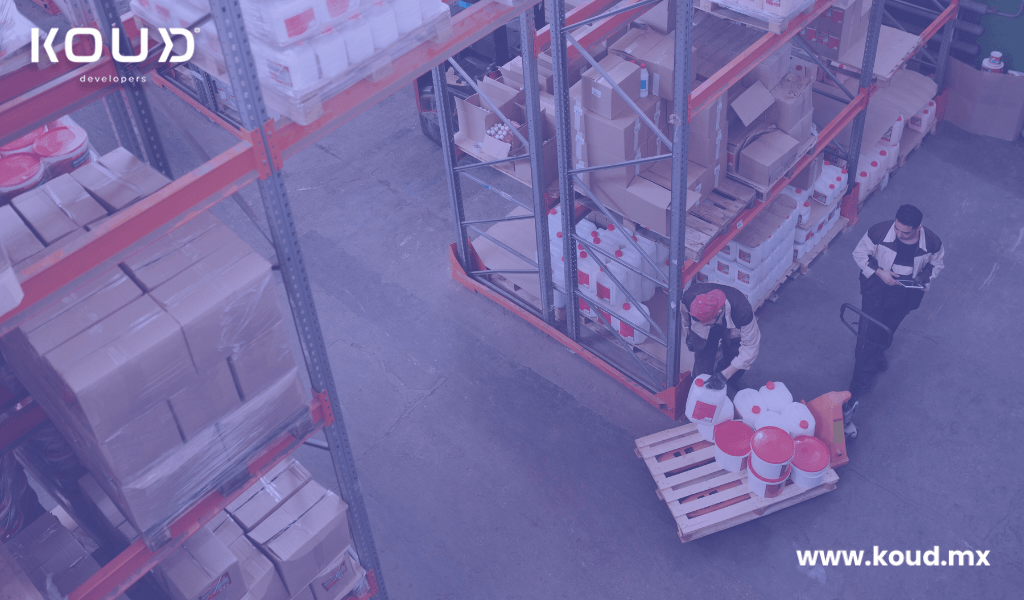Inventory and Warehouse Management with Custom Software
Inventory and warehouse management is one of the most critical areas in the supply chain. Poor inventory control can lead to financial losses, production delays, and issues with product deliveries to customers. However, many businesses still rely on manual processes or generic software that does not fully meet their specific needs.
Custom inventory and warehouse management software allows businesses to automate processes, optimize stock control, and improve operational efficiency. With technologies such as Artificial Intelligence (AI), the Internet of Things (IoT), and Big Data, companies can reduce errors, lower costs, and ensure smooth operations.
In this article, we explore how custom inventory management software can transform your company’s logistics and how to successfully implement it.
Inventory and Warehouse Management with Custom Software
1. Why Implement Custom Software for Inventory Management?
Inventory and warehouse management ensures that products are available at the right time and in the right quantity. When control is inefficient, problems can arise, such as:
Overstocking, leading to unnecessary storage costs.
Stock shortages, causing delays in production and order fulfillment.
Errors in product registration, resulting in financial losses.
Difficulty in tracking product locations within warehouses.
Benefits of Custom Inventory Management Software
Automated stock control to minimize manual errors.
Integration with sales and purchasing systems for optimized restocking.
Reduction in storage and distribution costs.
Better demand planning through AI and predictive analytics.
Complete traceability to track product location and status in real time.
Practical Example:
A distribution company implemented inventory management software with IoT, reducing stock errors by 40% and optimizing product rotation.
2. Key Features of Custom Inventory and Warehouse Management Software
Developing custom software allows for tailored features that meet the specific needs of each business.
1. Automated Stock Control
- Automatic inventory registration and updates.
- Restocking alerts and management of minimum and maximum stock levels.
2. Warehouse Space Optimization
- Smart distribution algorithms to maximize storage efficiency.
- QR codes and RFID tracking for quick product identification.
3. Integration with ERP and eCommerce Platforms
- Real-time inventory synchronization with sales platforms.
- Automated order processing and reduced errors in purchasing management.
4. Predictive Analytics and Real-Time Reporting
- Utilization of Big Data and AI to forecast demand and prevent overstocking or stockouts.
- Custom reports on product turnover and buying trends.
5. IoT-Based Traceability and Monitoring
- IoT sensors for tracking products in warehouses and distribution centers.
- Temperature control and storage condition monitoring for sensitive products.
Practical Example:
A retail company integrated its inventory software with its ERP, achieving real-time synchronization and reducing stock shortages by 30%.
3. Strategy for Implementing Custom Inventory Management Software
To ensure successful implementation, a strategic plan is necessary to guarantee a smooth transition and maximize system efficiency.
Step 1: Assessment and Objective Definition
- Identify current inventory management issues.
- Define key objectives such as error reduction, cost optimization, or improved stock replenishment.
Step 2: Technology Selection and Development
- Choose between a cloud-based or on-premise solution based on business needs.
- Integrate technologies like Big Data, IoT, and process automation.
Step 3: Integration with Other Business Systems
- Connect the software with ERP, CRM, and sales platforms.
- Ensure compatibility with suppliers and logistics operators.
Step 4: Employee Training and Pilot Testing
- Train employees on system usage to ensure proper adoption.
- Conduct pilot tests before full-scale implementation.
Step 5: Monitoring and Continuous Optimization
- Track software performance with KPIs such as error reduction and improved restocking times.
- Adjust the system based on operational needs and business growth.
Practical Example:
A manufacturing company implemented software with demand prediction algorithms, reducing storage costs by 25%.
4. Success Stories in Inventory Management Software Implementation
Case 1: Cost Reduction in a Distribution Center
Company: Logistics and distribution provider.
Problem: High storage costs due to overstocking.
Solution: Implementation of inventory software with predictive analytics.
Result: 35% reduction in storage costs and improved purchasing planning.
Case 2: Stock Optimization for an Online Store
Company: eCommerce retailer specializing in fashion and accessories.
Problem: Stock shortages and delays in product replenishment.
Solution: Integration of inventory software with an online store and ERP system.
Result: 40% reduction in stockouts and improved customer experience.
Case 3: Efficient Warehouse Management in a Retail Chain
Company: Supermarket with multiple locations.
Problem: Disorganized warehouses and difficulty tracking products.
Solution: Development of software with QR codes and RFID for product tracking.
Result: 30% reduction in product search times and greater operational efficiency.
Custom inventory and warehouse management software enables businesses to automate processes, optimize stock control, and reduce operational costs. From ERP and sales platform integration to AI and Big Data usage, a tailor-made solution can transform any company’s logistics.
If you’re looking to implement custom inventory management software, contact us for expert consulting and optimize your business operations.
Empresa
- Nosotros somos
Somos una empresa mexicana con más de 12 años de trayectoria en la industria
Servicios
- Desarrollo de Software a la medida
- Staffing TI
- Headhunting TI
Contacto
- +52 1 33 2342 9770
- letskoud@qa.koud.mx
- Av. Patria 2085 int. 175 piso 1 puerta de hierro Zapopan Ja. 45116


